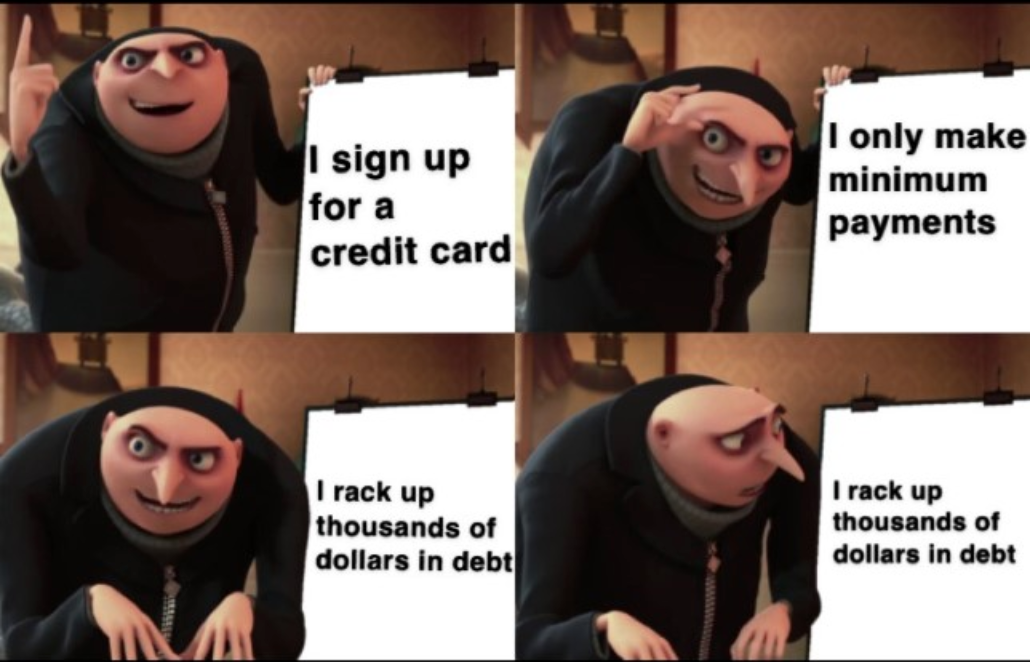Virtual Adaptation - CARTOONS
![]() Did you know? Our Teacher Toolkit is full of assessment and differentiation resources. To access our Teacher Toolkit from the menu at the top of our site, you will need to have created a teacher account and be logged in.
Did you know? Our Teacher Toolkit is full of assessment and differentiation resources. To access our Teacher Toolkit from the menu at the top of our site, you will need to have created a teacher account and be logged in.
Every unit in the NGPF curriculum has a CARTOONS activity where students examine a number of cartoons about the unit topic and analyze one of them in-depth to determine the message being sent and a connection to what they have learned. Here is an example from the Savings Unit - CARTOONS: Why is it So Hard to Save Money?

At a time where many schools have transitioned to offering synchronous and asynchronous learning, we've listed some adaptations and extension ideas that may work for your current classroom environment.
Synchronous Learning Environment Ideas:
- Display the first cartoon on your screen and have a discussion analyzing the message using the questions that are provided in the activity.
- After analyzing the first cartoon together, have students then review one of the other cartoons listed in the activity. You can either assign or let them pick one. If your web conferencing platform allows, you could have students move into breakout rooms to have a small-group discussion. Provide time for students to answer the discussion questions and then have a whole group, student-led discussion about each cartoon.
- Create a slide deck (similar to this) displaying each cartoon. Provide students with think-time to analyze each cartoon and respond to the question prompts by submitting a Google Form, Google Doc, or verbal analysis. End the lesson by having a short whole-group discussion about their favorites and the key messages that are being sent.
Asynchronous Learning Environment Ideas:
- Have the students complete the activity exactly as written.
- Use the Question in Google Classroom to post the cartoon and the reflection questions. Have each student respond (either to just one Question or all of them). You can decide if you want students to have the ability to reply to each other to promote discussion or turn that feature off.
- For this to work best, post each cartoon as a separate Question, or provide very specific instructions for how students should respond.
Extend the Activity:
EXTENSION IDEA #1: An idea that NGPF Fellow Amanda Volz discusses in her CARTOONS Teacher Tip Video, is to extend this activity by having students create and share their OWN cartoons or memes related to your unit topic. Students can use online resources, websites, or just pencil and paper! Students can submit their creations to you the teacher or in a "display" (using Google Slides or Padlet) so the entire class can view them.

EXTENSION IDEA #2: Similiar to the New Yorker Cartoon Caption Contest, provide students with a cartoon that includes the image but no caption. Here's an example.
- In a synchronous environment, show the students the captionless cartoon on your screen. Provide students with think-time (you could have them input answers into a Google Form or Google Doc for submission). Have students share their caption ideas with the whole class through discussion. You could even do a reveal of the actual cartoon caption at the end of the discussion!
- In an asynchronous environment, use some of the same strategies listed above by using Google Classroom Question (this could generate great discussion!), a collaboration board, or an individual assignment.
View NGPF's Virtual Adaptation Series if you're looking for additional resources with suggestions on how to facilitate in a virtual environment.
Click here to sign up, it only takes a moment and you will receive one email each morning that will include the Question of the Day or a FinCap Friday, and other timely and engaging resources.
About the Author
Amanda Volz
Amanda joins the NGPF Team with over 20 years of experience teaching personal finance. During that time, she led her students to hundreds of thousands of dollars in scholarships, won multiple awards, and most importantly, impacted the financial lives of thousands of high school students. Amanda prides herself on being an educational leader and is constantly looking for innovative ways to make the classroom relevant, rigorous, and fun. She is a passionate advocate for financial education and has been a long-time member of the NGPF community. Fun fact - Amanda was NGPF’s first teacher account! When Amanda isn’t working, she enjoys cooking, gardening, and traveling with her husband and two children.
SEARCH FOR CONTENT
Subscribe to the blog
Join the more than 11,000 teachers who get the NGPF daily blog delivered to their inbox:










